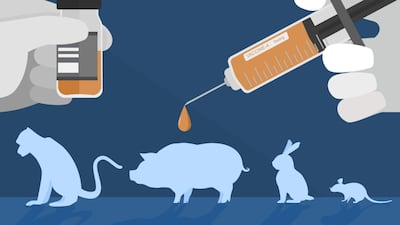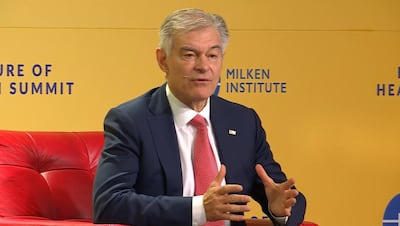The UK’s roadmap for reducing animal testing is a positive starting point, but greater transparency from the drug regulator and a more detailed workplan from government will be required to make the plans a reality, an expert from Cruelty Free International says.
Limited visibility into the FDA’s use of remote regulatory assessments and the lack of a clearly defined closeout process leave companies uncertain about outcomes and expectations, industry experts say.
Martin Makary’s photo-op and videos promoting the groundbreaking of a new Novartis US-based manufacturing facility create an appearance of favoritism, President George W. Bush’s former chief ethics lawyer told the Pink Sheet.
Former agency officials who now represent industry worry that a deregulatory bent could be driving the "Simple Reform" plan to merge all medical product and clinical research inspectorates and that the specialist expertise gained in the 2017 "Program Alignment" initiative will be reversed.
The October 2024 reorganization that moved compliance functions back into the product centers has resulted in speedier issuance of biologics warning letters and an increase in drug manufacturing facility classifications, FDA compliance officials said.
Facilities that are not ready for an inspection can lead to delays in the FDA’s site assessment and leave little time to resolve deficiencies ahead of a user fee goal, CBER compliance office Director Melissa Mendoza said.
Changes to the procurement of critical medicines and their active ingredients are among the amendments the Council of the EU has made to the draft Critical Medicines Act.
New approach methodologies are increasingly shaping the future of medicine development by making drug testing less reliant on animals.
The FDA wants to charge a yearly fee after an IND is filed for firms that do not conduct Phase I clinical studies in the US as part of its proposal to encourage more domestic development.
The UK’s autumn budget failed to introduce any widespread changes for pharma, but scale-ups and innovators could benefit from changes to enterprise and investment schemes. Some industry voices warn of underinvestment in the MHRA and innovative medicines.
The FDA included storage and handling instructions common in labeling in its approval announcement, suggesting concerns remain about the potential for NDMA to form after products are distributed.
A webpage for PharmaTher’s ketamine product lacked risk information and made misleading claims about the approved indication, the FDA said in a rare ad/promo violation letter to an ANDA holder.
During the first GDUFA IV negotiation session, industry representatives were unsure whether the FDA’s idea to create pathways for onshoring incentives fit the scope of the generic drug user fee program.
A Senate hearing on the medical product supply chain suggests there is bipartisan support for ‘buy American’ policies for federal Rx purchases, and for country-of-origin labeling to help those policies expand to the private sector.
New Zealand is also lifting its prohibition on advertising unapproved medicines at medical conferences and trade shows in order to boost its appeal as a host for such events and generate millions of dollars in revenue.
‘Why We Would Do It Again’ – Gilead & Roche On Pioneering Global Initiative For Manufacturing Change
Gilead and Roche reflect on their experiences with a global initiative that delivered aligned regulatory decisions through joint hybrid inspections and synchronized review of post-approval changes.
New FDA data shows a potentially concerning drop in ANDA submissions, while the first-cycle approval rate increased.
Pfizer, which markets Vyndamax for transthyretin amyloid cardiomyopathy, said an FDA violation letter shows BridgeBio made false and misleading superiority claims, but BridgeBio refused to participate in the National Advertising Division process.
Association for Accessible Medicines CEO John Murphy told the Pink Sheet that the FDA may need to consider phasing in the requirements for the new ANDA priority voucher incentive program if it wants sponsors to apply in the near-term.
The Trump Administration’s efforts to encourage more US-based pharmaceutical manufacturing have largely centered on FDA plans and Trump’s threats of tariffs and Most Favored Nation pricing, but Oz hinted Medicare and Medicaid soon may soon announce new incentives.




















